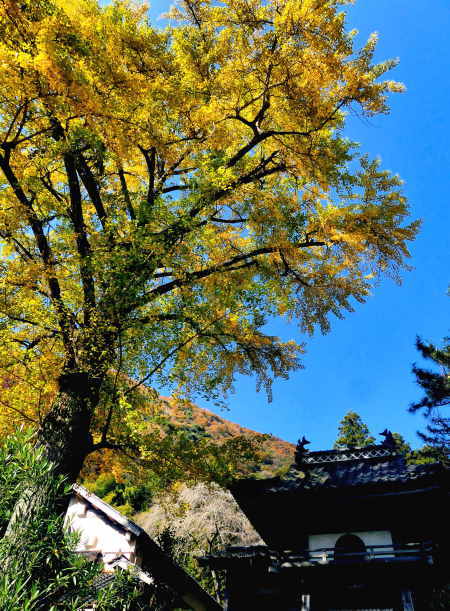Kannabiji Temple's Gingko
It's that time of the year when I post some pics of this year's autumn colors. About three weeks ago Yoko had a day off that coincided with a beautiful sunny day so we headed off on a local trip to see if we could find some color. The first stop was Kannabiji Temple, a few kilometers upstream on the Gonokawa River.
Kannabiji moved to its present site at the end of the 19th century. Formerly it was a large monastic complex on the mountainside that dated back to the Heian period. About twenty years ago a friend took us on a bushwacking hike up to the old site where the foundation stones of the main hall still remained in a small clearing in the forest.
At the end of the 16th century, many of the buildings burnt down. I suspect this was part of the Warring States conflicts but have not had that confirmed. The temple continued on its mountain site until the late 19th century. In 1872 a big earthquake closed the spring that supplied the temple with water, and in combination with having much of its land confiscated by the new Meiji government, it was decided to relocate the temple at the foot of the mountain.
All that remains now is the main hall, a large residence for the priest, a gate, and a large storehouse. I went inside the main hall many years ago and was surprised by a mural on the ceiling and the brightly-painted woodwork. I really want to go back and take a lot of photos. I've also been inside the old priest's house though he now lives in a newer house in front of the temple.
The gate contains a fine pair of Nio guardians and is overshadowed by a large Gingko tree. We were a little early. In a few weeks, the whole temple will be carpeted in golden leaves. The storehouse holds the temple treasures, foremost of which is some samurai armour. Apparently, it is the third-oldest samurai armour still existing, and suggest how important the temple once was.
Koinobori & Children's Day in Japan



















beautiful !! thanks a lot !
ReplyDeleteGabi